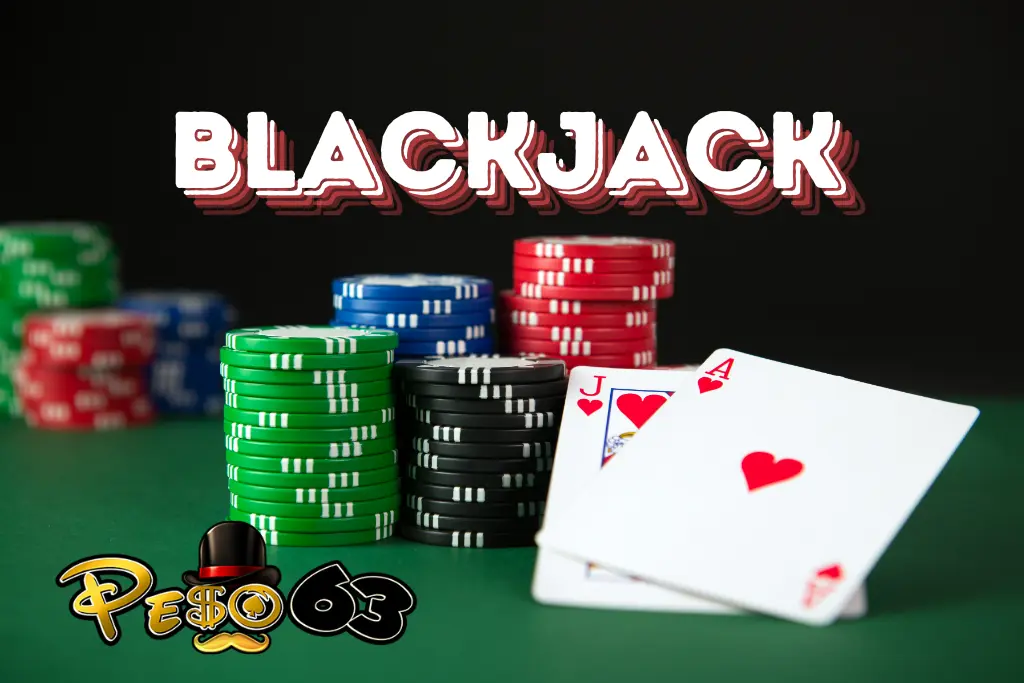Blackjack is among the most favoured casino games worldwide and is present in almost every gambling establishment. Whether you visit renowned casinos in the Philippines, Macau, Singapore, or Las Vegas, you will always see crowded tables of players gathered around playing Blackjack. But what exactly is this game? And how can beginners learn to play it? In this blog placement, we will delve into the world of Blackjack, its origins, rules, and strategies to help you understand and master this exciting card game.

What is Blackjack? What is the origin?
Blackjack, also understood as “21”, is a card game developed in France in the 1700s. It was initially learned as “vingt-et-un”, which translates to “twenty-one” in English. However, the game gained popularity once it reached America through French colonists. The name “Blackjack” was given to the game due to a special bonus payout in the game’s early days. This bonus was given when a player’s hand contained an Ace of Spades and a raven Jack (either Clubs or Spades), hence the name “Blackjack”.
Over the years, Blackjack has undergone several changes and variations, but the game’s basic premise remains the same. The game aims to beat the dealer’s hand by getting a higher hand value without going over 21.
How to play Blackjack for beginners
Blackjack is a somewhat simple game, making it a popular choice for beginners in gambling. The game is typically played with one or more normal decks of 52 cards, each with a point value. Here are the basic steps of how to play Blackjack:
- Place your bet: Before any cards are marketed, players must position their bets on the designated betting area on the table.
- Receive your cards: The agent will then deal two cards face-up to individual players, including themselves. The dealer’s first card is usually dealt face-down, known as the “hole card”.
- Decide to hit or stand: Once you have received your cards, you can choose to either “shoot” ( ask for another card) or “stand” (keep your present hand). The value of your hand will determine whether you should hit or stand, which we will discuss in the next section.
- Dealer’s turn: After all parties have made their conclusions, the dealer will reveal their whole card and resume drawing cards until they reach 17 or higher. If the dealer’s hand goes over 21, they bust, and all players with remaining hands win.
- Payout: If your hand is higher than the dealer’s without reaching over 21, you win and accept a payout of 1:1 (equal to your bet). However, you lose your bet if your hand is within the dealer’s or you exceed 21.
How do you easily win at Blackjack?
As with any casino game, there is no guaranteed way of winning at Blackjack every time. However, some strategies and tips can increase your chances of winning. Here are some ways to improve your gameplay in Blackjack:
- Learn basic strategy: Basic strategy is a set of rules that tell you the best action to take in each situation. It is founded on mathematical probabilities and can help you make better judgments when playing Blackjack. You can find many basic system charts online that guide you on what to do with each hand.
- Practice with free games: Before betting real money at a casino, practice with free online Blackjack games. This will allow you to get familiar with the rules and strategies without risking any money.
- Avoid insurance bets: Insurance bets are side bets that can be positioned when the dealer’s face-up card is an Ace. It pays 2:1 but has a high house edge, making it a riskier bet.
- Manage your bankroll: Setting a budget when playing Blackjack is essential. This will prevent you from yielding more than you can afford and help you manage your money better.
Terminology and how to calculate winning and losing points in Blackjack
As mentioned earlier, each card in Blackjack has a point value. Here is a breakdown of the point values:
- Number cards (2-10): Face value
- Face cards (Jack, Queen, King): 10 points
- Ace: 1 or 11 points (counting on which value benefits the hand)
To calculate the total value of your hand, simply add up the point values of each card. For example, a hand with a 5, 7, and Ace would have a total value of either 13 or 23, depending on whether the Ace is valued at 1 or 11. If the total value exceeds 21, the hand is considered a “bust” and loses automatically.
Some common terminology used in Blackjack includes:
- Hit: To order another card from the dealer.
- Stand: To keep your current hand and not receive any additional cards.
- Double down: To double your initial bet after receiving your first two cards. However, this comes with the condition that you must hit one more card and cannot take further action afterwards.
- Split: If your first two cards have the same value, you can split them into two hands and place an additional bet equal to your original bet.
- Surrender: To give up half of your bet and forfeit the hand.
Payout rate when winning
The payout rate in Blackjack may vary, depending on the casino and the game’s detailed rules. However, in most cases, a winning hand will have a payout rate of 1:1 (equal to your bet). Some casinos may offer a higher payout rate for sure hands, such as a “natural” Blackjack (an Ace and a card with a value 10), which pays 3:2.
Advice
As mentioned earlier, there is no guaranteed way to win at Blackjack, but some tips and advice can help you improve your likelihood of winning. Here are a few things to keep in mind when playing Blackjack:
- Avoid taking insurance bets as they have a high house edge.
- Always use basic strategy to make the best decisions in each hand.
- Practice and familiarise yourself with the game before betting real money.
- Set a budget and stick to it to prevent overspending.
- Keep track of cards already played to estimate the probability of certain cards being dealt.
You can refer to the following strategies for drawing the third card onwards in Blackjack:
Soft hands
A “soft” hand in Blackjack is a hand that includes an Ace that can be measured as either 1 or 11 without busting. For example, a hand with an Ace and a six would be considered a soft 17. Here are some strategies to consider when playing soft hands:
- Always hit if your hand has a total value of 13-15.
- If your hand has a total value of 16-18, double against a dealer’s 4, 5, or 6. Otherwise, hit.
- Always stand if your hand has a total value of 19 or above.
Hard hands
A “hard” hand in Blackjack is a hand that does not contain an Ace, or its value cannot be changed without the hand going over 21. For example, a hand with a nine and a seven would be considered a hard 16. Here are some strategies to consider when playing hard hands:
- Always hit if your hand has a total value of 5-8.
- Always hit if your hand has a total value of 12 or below.
- If your hand has a total value of 13-16, stand against a dealer’s 2-6. Otherwise, hit.
- Always stand if your hand has a total value of 17 or above.
Pair splitting
As mentioned, if your first two cards have the same value, you can split them into two hands and place an additional bet equal to your original bet. Here are some strategies to consider when splitting pairs:
- Always split Aces and 8s.
- Never split 5s or 10s.
- Split 2s and 3s against a dealer’s 4-7. Otherwise, hit.
- Split 6s against a dealer’s 3-6. Otherwise, hit.
- Split 7s against a dealer’s 2-7. Otherwise, hit.
- Split 9s against a dealer’s 2-6, 8, or 9. Otherwise, stand.
Conclusion
Blackjack is a thrilling and straightforward game that has been played for centuries. With the proper knowledge and procedures, you can increase your chances of winning and have a fun experience while playing. Always use basic strategy and manage your bankroll to ensure a more enjoyable and profitable time at the Blackjack table. Happy playing!

